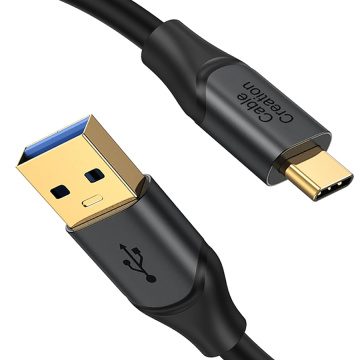Difference between USB3.1 and USB3.2-Naming
The USB3.2 standard incorporates the old USB3.0 and USB3.1 and renames them USB3.1 Gen2 as USB3.2 Gen2, and USB3.0 and USB3.1 Gen1 as USB3.2 Gen1. This naming scheme has caused some confusion for consumers. The original clear naming of USB3.0 and USB3.1 has become complicated under the new standard.
In terms of historical development, the naming of USB interfaces has always been in a state of flux. USB1.0 had a theoretical transfer rate of only 1.5Mbps, and the USB1.1 standard increased the theoretical rate to 12Mbps. 2001 saw the introduction of the USB2.0 standard, which has a theoretical transfer rate of 480Mbps, and 2010 saw the arrival of USB3.0, which further increased the transfer rate to 5Gbps. However, as technology continues to evolve, the emergence of USB3.1 and USB3.2 has made naming more complex.
This naming complexity can easily confuse consumers when purchasing a device. For example, some vendors may take advantage of this naming complexity to mislead consumers into purchasing products that do not meet their needs. Consumers may think that USB3.2 Gen1 is the new high-speed interface, when in fact it has the same performance as USB3.0.
To avoid being misled, consumers need to look more closely at product descriptions and interface labeling when purchasing devices. Intel is also aware of this problem and has revealed a series of new USB interface logos in its latest documents, with hints next to the interface and on the data cable. For example, USB 3.2 5Gbps (i.e., USB3.0, USB3.1 Gen1, and USB3.2 Gen1 in the past) will have the SuperSpeed USB logo plus the number 5, which stands for a bandwidth of 5Gbps.
In short, the USB3.2 nomenclature, although designed to better standardize the USB interface standard, has to a certain extent brought trouble to consumers. Consumers need to be more careful when purchasing devices and understand the actual performance behind the different naming to ensure that they are purchasing a product that meets their needs.

